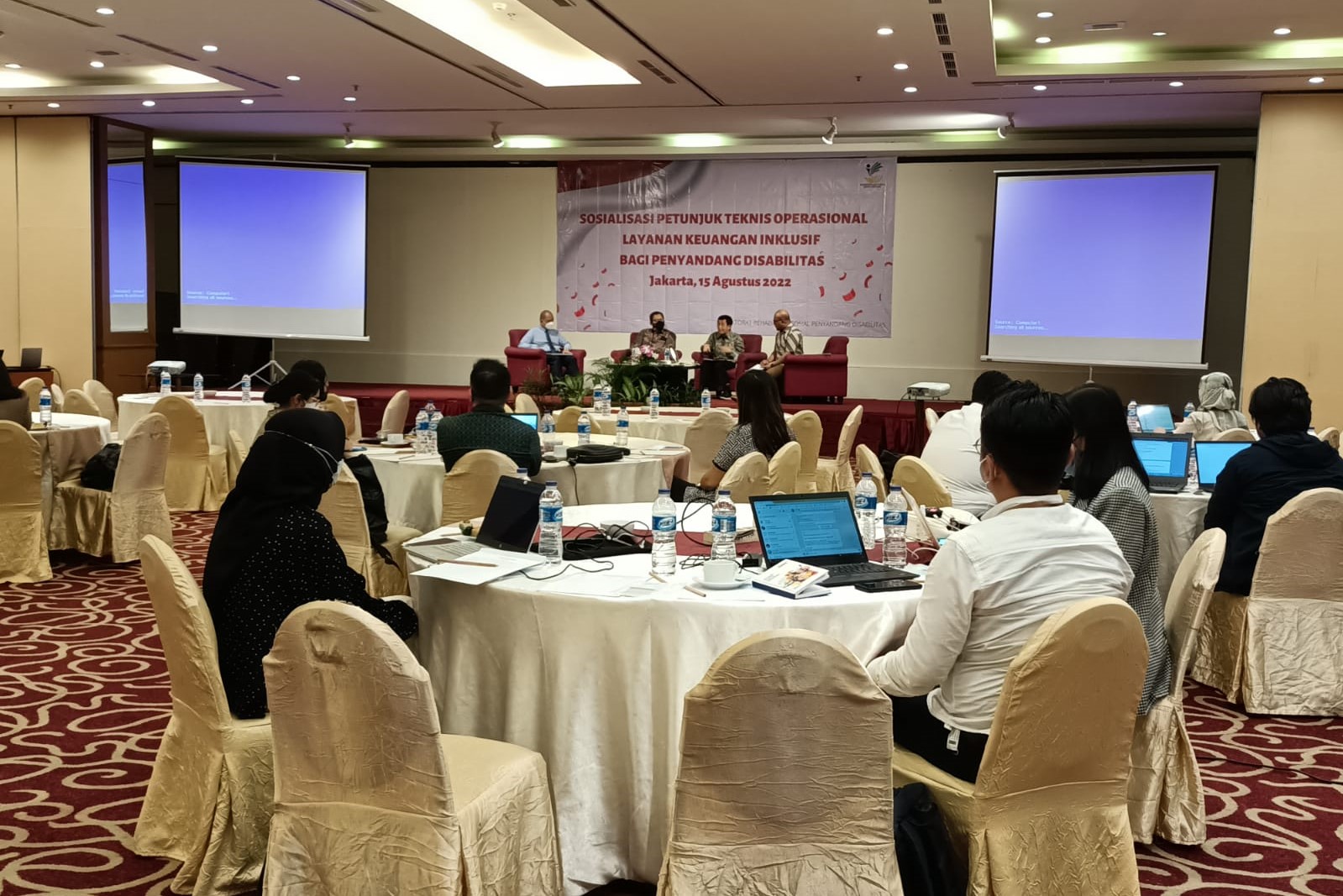Financial Inclusion, Expanding Access to Financial Services for Persons with Disabilities

JAKARTA (August 15, 2022) - The very rapid development of the financial
industry is currently encouraging the realization of easy access to financial
services for the public in the economic system, including persons with
disabilities. The Ministry of Social Affairs to develop access to
financial institutions for persons with disabilities, the "Dissemination
of Operational Technical Instructions for Inclusive Financial Services for
Persons with Disabilities" took place at the Mercure Hotel, Jalan Hayam
Wuruk Jakarta. (15/8/2022).
Sumiatun, Coordinator of the Working Group for
People with Intellectual Disabilities at MoSA, stated that Presidential
Regulation No. 53 of 2021 on the National Action Plan for Human Rights (RAN
HAM) 2021-2025 mandated MoSA to carry out dissemination of Financial Inclusion
services. "Finance inclusion is a strategy to achieve broader economic
development goals, namely poverty alleviation, improvement of community
welfare, and part of the strategy to achieve financial system stability",
said Sumiatun.
"Disability issues are a cross-cutting issue
that needs to be handled in a comprehensive and multi-sectoral manner. It takes
a strong commitment from various parties to realize Financial Inclusion in
Indonesia", she added.
The Financial Services Authority (OJK) as the
organizer of the regulatory and supervisory system for all activities in the
financial services sector, issued regulations related to providing access
to financial services to all parties, including persons with disabilities, and
drafted Operational Technical Instructions (PTO) for Inclusive Financial
Services for Persons with Disabilities. which can be adopted by the Financial
Services Providers (PUJK).
"The PTO is a minimum standard of financial
services to consumers/potential consumers of PUJK with disabilities so that
the rights of persons with disabilities are fulfilled and protected,"
explained Puji Iman Siagian, Head of the Financial Research Section of OJK.
PUJK was expected to support the implementation of
Financial Inclusion services including the distribution of social assistance.
The OJK application would be equipped with a PUJK feature that could disburse
social assistance closest to the location of the beneficiary. Financial
services were a right for persons with disabilities as well as the right to
education. Digitizing payments for Economic and Financial Inclusion for persons
with disabilities sought to enable them to be able to work, engage in
activities, and become entrepreneurs.
Ginanjar, Assistant Director of the Payment System
Policy Department of Bank Indonesia revealed the importance of inclusion.
"The progress of digitization is very fast and unstoppable. Many traders
and consumers have enjoyed the convenience of digitization so they will not
return to conventional and become a new habit. This needs to be anticipated so
that digitalization can be inclusive," said Ginanjar.
Meanwhile, the results of the Financial Inclusion research for persons with disabilities delivered by Bagus Santoso, Head of the DEFINIT Research Institute, revealed that achieving the 90% Financial Inclusion target by 2024 requires hard work from all parties. Currently, there is already a cash reader, making it easier for people with disabilities to recognize currency and transact digitally.
MoSA would continue to encourage efforts to accelerate Financial Inclusion services from the supply side which was under the authority of OJK and Bank Indonesia, as well as from the demand side which takes into account the needs of persons with disabilities.
The activity which was attended by representatives of banks, organizations of persons with disabilities, and the National Commission for Disability (KND) was a step to open access for persons with disabilities to create an equitable economic cycle.
Various efforts needed to be made by various
parties related to Financial Inclusion which consist of: First, dissemination
for persons with disabilities both to agencies and customers which contains
strengthening of financial literacy as well as procedures or procedures for
customers to engage in banking activities. Second, building infrastructure and
banking services that are disabled-friendly with the aim of no obstacles for
customers with physical, mental, sensory, and intellectual disabilities, as
well as multiple disabilities.
 English
English
 Bahasa
Bahasa
